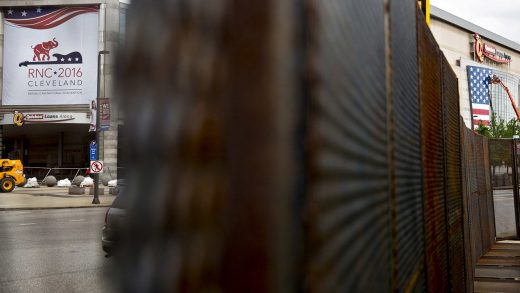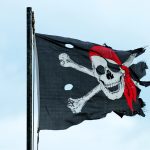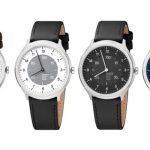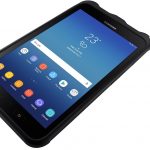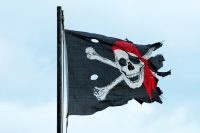Cleveland’s RNC “Event Zone” May Be A Petri Dish For Violence
An estimated 50,000 people are flocking to Cleveland for the Republican National Convention next week. And just as Donald Trump disrupted the party’s politics and traditions, his convention is expected to be far more chaotic than the GOP’s usually tightly scripted affairs.
Federal officials are running the show in Cleveland, security-wise, with the Secret Service at the top of the command chain and agencies like the FBI, ATF, FEMA, Coast Guard, FAA, and many others below. And somewhere between 2,500 and 5,000 police are coming in from other parts of the country to help out the 1,600 or so Cleveland cops who are charged with protecting citizens and visitors—and dealing with protesters.
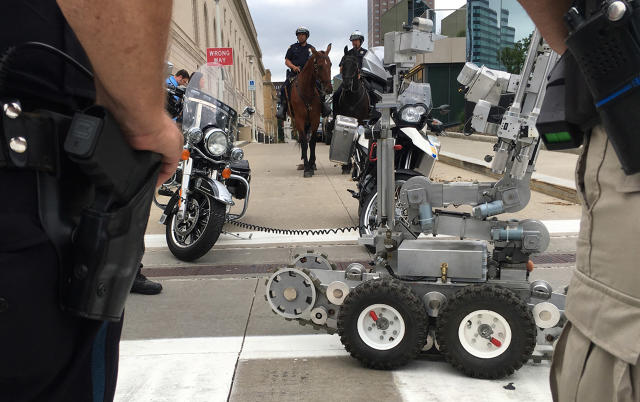
Cleveland’s police department has been assuring the public that it has plenty of experience securing big events in the city. But the RNC is different than any event that’s ever been held in Cleveland. With a polarizing figure like Trump at the center of the three-ring circus, the chance for violence inside and outside the convention center is very real.
Federal officials are nervous. “I am concerned about the prospects of protests getting out of hand,” Homeland Security head Jeh Johnson said during a recent Congressional hearing. “I am concerned about the possibility of violence.”
3,000 people from various agencies of the DHS will be in Cleveland, along with an additional 1,000 government employees, Johnson said. FBI Director James Comey said during the same hearing that high-profile events like the RNC can be attractive targets for domestic terrorists.
Guns Allowed
Now add the fact that Cleveland is an open-carry city, so anybody visiting the city to either participate in the convention (or protest it) can carry a firearm, or even an assault weapon, within the 1.8 square-mile “event zone” cordoned off in downtown Cleveland. Bitterly anti-Trump groups like the New Black Panthers will be there, and so will groups like Citizens for Trump. Both of those groups have said they’ll be carrying firearms. Meanwhile, items like tape or tennis balls or water guns, however, are expressly prohibited. And firearms are not allowed within Secret Service-controlled secure zones like the area around the convention center.
Within the event zone are a handful of public parks and squares designated as “protest areas,” and a designated parade route that will be used for marches. The marching groups have to sign up for time slots on the route, and there are buffer times built into the schedule to help keep opposing groups apart. Some 30 groups have registered for a permit to parade on the route, but the route is nowhere near the convention center; it leads out into an industrial part of the city. So, many groups may not bother with it, and may opt to hold protests closer to the convention center. For instance, neither Black Lives Matter of Cleveland nor Black Lives Matter of Cuyahoga County applied for a permit but will be marching next week. Still, the closest protesters can get to the convention center is a few hundred feet away.

Bikers for Trump plan to demonstrate, as do the Traditionalist Worker Party and the Golden State Skinheads—the two white hate groups that held a rally in Sacramento where at least five people were stabbed. All three groups have said they plan to protect Trump supporters in Cleveland.
On the whole, protest groups of all kinds can mix freely within the event zone, which takes up about half of the downtown area, and police are relying on a heavy presence and quick action when (lawful) verbal exchanges turn into (unlawful) physical ones. Cops on bikes will be highly visible, and the Cleveland police department has said officers will use the bikes as barricades between opposing protest groups in the event of an angry face-off.
The police are even asking homeless people to help. They were circulating in homeless encampments in downtown Cleveland Tuesday night, asking people to stay on the lookout for outside agitators who may be posing as homeless people.
There will be fisticuffs. And maybe worse. Cleveland hospitals were told by the Secret Service to prepare for a “four-day siege,” in other words pack in enough supplies, medicines, and equipment to operate with no outside help for 96 hours. Doctors have been asked to postpone elective surgeries and postpone vacations to remain on call in Cleveland during the RNC.
Militarized
Cleveland Public Safety got a $50 million grant from the federal government to help secure the RNC. It spent $20 million of it on new equipment like modified vans and trucks, handcuffs, extrication devices (to separate protesters who have locked themselves to things or other people), and chemical munitions (like pepper spray and possibly tear gas). The shopping list also included 2,000 steel batons, 325 sets of tactical armor, 300 patrol bicycles, 25 rifle scopes, 10,000 sets of flexible handcuffs, and lots and lots of body armor for both police and health care workers.
But the city is not disclosing the whole list of goodies. Some have raised concerns that the police have purchased Stingray devices to monitor cell phone use of protesters during the event. Reports have said that the city might resort to using a Long Range Acoustical Device (LRAD), which disperses crowds by emitting high-pitched sounds capable of permanently damaging the hearing of anybody nearby. The Ohio Highway Patrol is also said to be in possession of up to five bomb-hunting robots that could easily be modified for aggressive uses (like the one used to kill police shooter Micah Johnson in Dallas July 7).
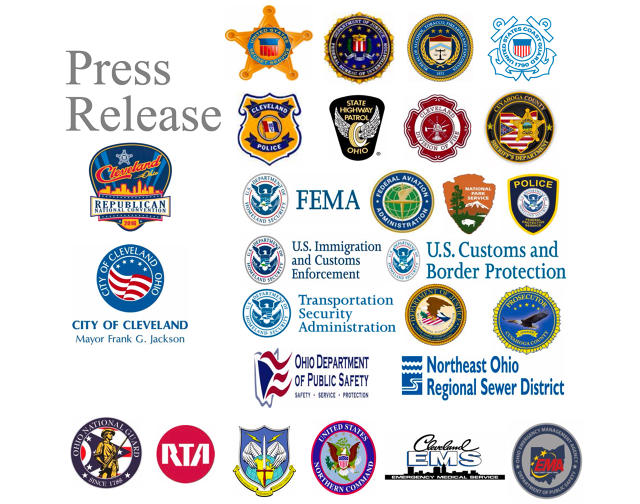
The police say the military-style equipment and protective gear won’t be visible unless things get out of hand. Police departments across the country have been bulking up on military-style gear dating back to 9/11. Some of it comes from the military in a sort of hand-me-down program. In recent protests in cities like Baton Rouge, Louisiana, protesters have looked seriously overmatched against heavily armed and armored police.
Cleveland Police chief Calvin Williams says cops will be dressed in short-sleeved shirts and slacks (to look less confrontational), and will be wearing body cameras. They’ve been instructed to be friendly and engaging with the people in the event zone, but ever present in case problems start. When in normal dress, the police will be wearing body cameras, but not when they’re in their riot gear. The department recently established a special video unit to move about the city during the RNC to capture any events that can’t be recorded by body cameras.
But there may be reason to doubt the ability of Cleveland police and public safety to control the situation. The city has a mixed record of managing protest situations in the past. Reports have surfaced that the cities of Cincinnati and Seattle refused to send officers to help in Cleveland because lack of communication and coordination coming from the city.
There’s reason for concern about transparency and credibility, too. The police and city officials promised full transparency in their plans and preparations for the RNC, but have kept basic information, like the number of officers who will be on duty, secret. The city’s 911 one system crashed several times in May, and city officials have provided little assurance that the system won’t be overloaded during the convention. Shortly after the shooting of 12-year-old Tamir Rice in 2014, Cleveland police were harshly criticized in a report by the Department of Justice for discriminatory practices and excessive use of force.
Hopefully the police’s “friendly but close by and ready” strategy will have a smothering effect on potential scuffles between opposing groups, who will be freely mixing—some of them armed—in downtown Cleveland. It’s clear that lots of preparation has gone into securing the RNC at the local, state, and federal levels. How well all these interconnected systems will work together during a crises situation remains to be seen. Let’s hope we don’t have to find out. In the immortal words of Mike Tyson: “Everybody has a plan until they get punched in the mouth.”
Fast Company , Read Full Story
(60)

